Spring blooming lawn and garden weeds: A focus on winter annual identification and management
Understand your spring blooming lawn and garden weeds for better control.

The yellow flowers of perennial dandelion are always a sign that spring is here, but there are many other less conspicuous weeds flowering at this time. Many of the early-blooming spring weeds are categorized as winter annuals, meaning they germinate in the fall, over-winter in a vegetative state, flower in the spring and produce seeds by late-spring to early-summer before ultimately dying. During the heat of the summer, these species mostly exist as seeds awaiting the opportunity to germinate in the fall. This lifecycle contrasts that of summer annuals, which act more like our annual bedding plants and vegetables.
Following are photos and descriptions of some of the most common winter annual weed species from home lawns and gardens that we at Michigan State University Plant & Pest Diagnostics are asked to identify each year. We conclude with some general recommendations for managing these weeds.
Common winter annual weeds
Hairy bittercress (Cardamine hirsuta), yellow rocket (Barbarea vulgaris) and whitlow-grass (Draba verna) are all members of the Mustard family, which grow as rosettes close to the soil surface before sending up flowers on vertical stems. The leaves of hairy bittercress are usually 3 inches or less in length and covered with fine hairs. The leaves of yellow rocket can be up to 6 inches long and are smooth. Whitlow-grass has the smallest rosette of Mustard family discussed, no bigger than 2 inches in diameter. Leaves are oblong and covered with fine hairs.
These plants all produce flowers on upright stems. Hairy bittercress and whitlow-grass both produce small white flowers with four petals, deeply lobed in whitlow-grass. Yellow rocket produces yellow flowers, again with four petals characteristic of this family.
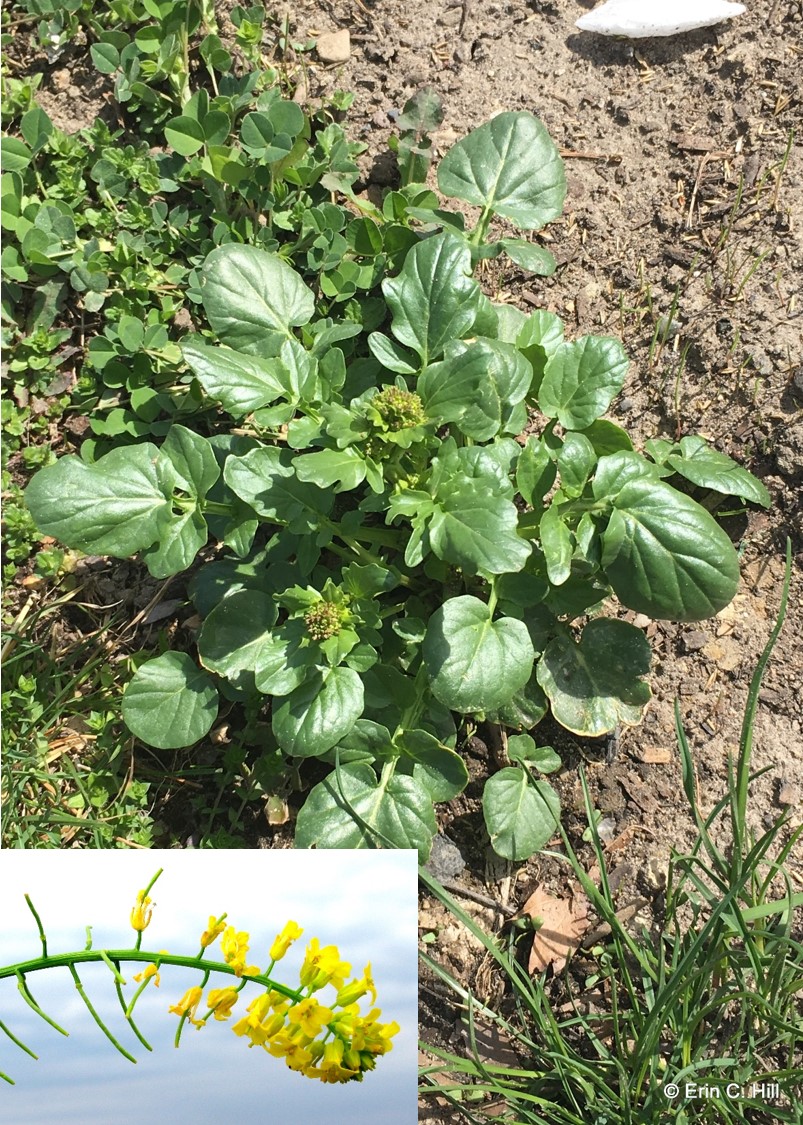
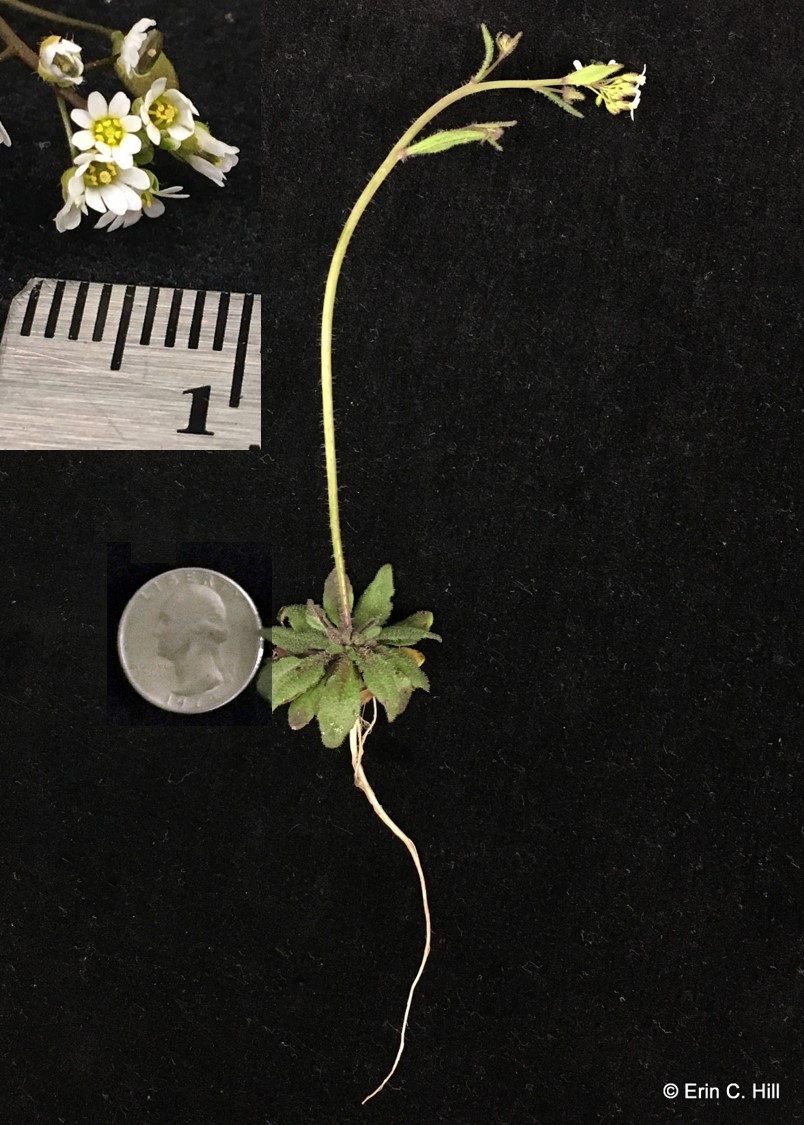

Henbit (Lamium amplexicaule) and purple deadnettle (Lamium purpureum) both have the characteristic square stem of plants in the Mint family. The leaves of both are deeply veined covered with soft hairs, but the leaves of purple deadnettle are triangular and the upper leaves are often purple in color. The leaves of henbit are more rounded to heart-shaped.
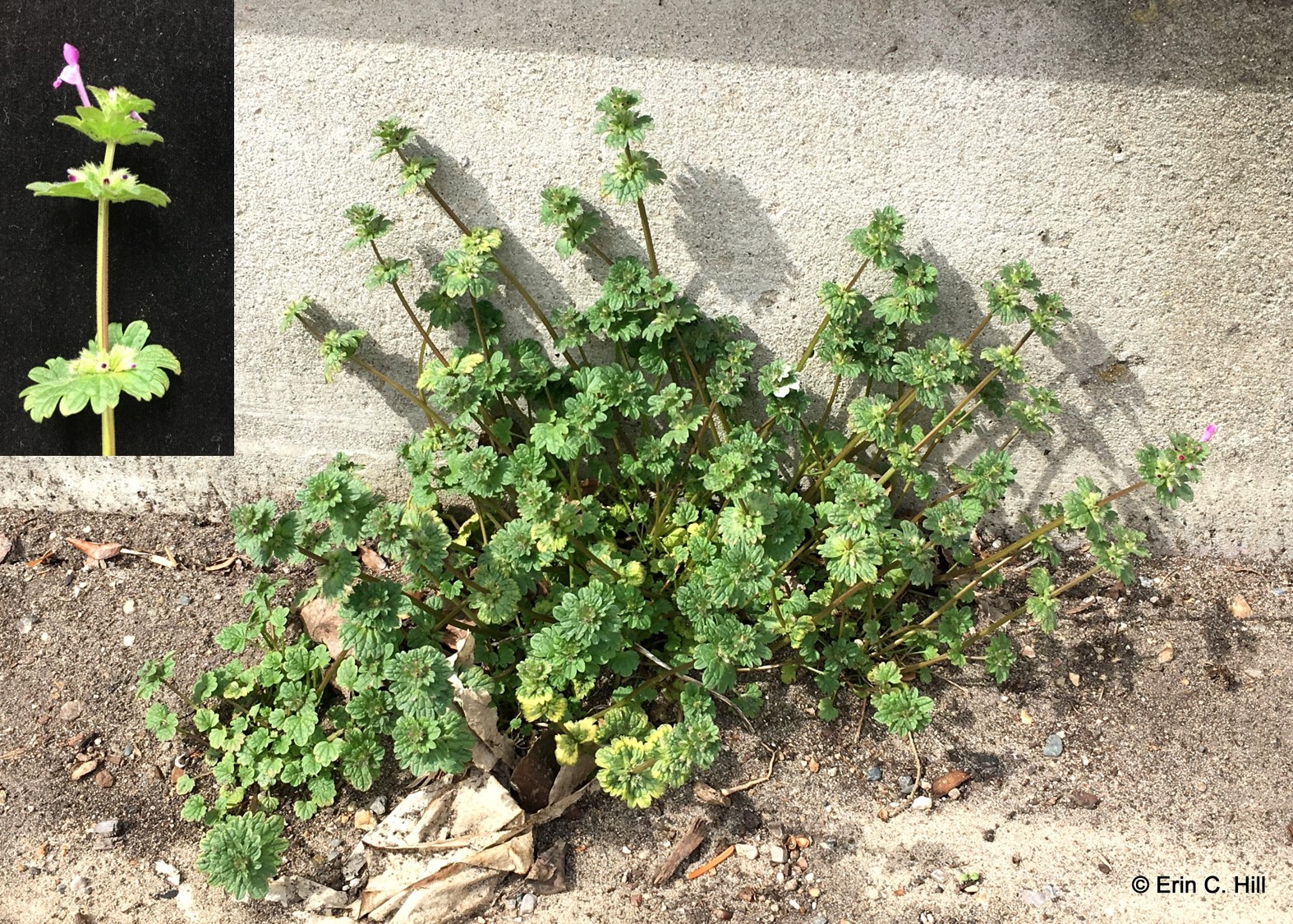
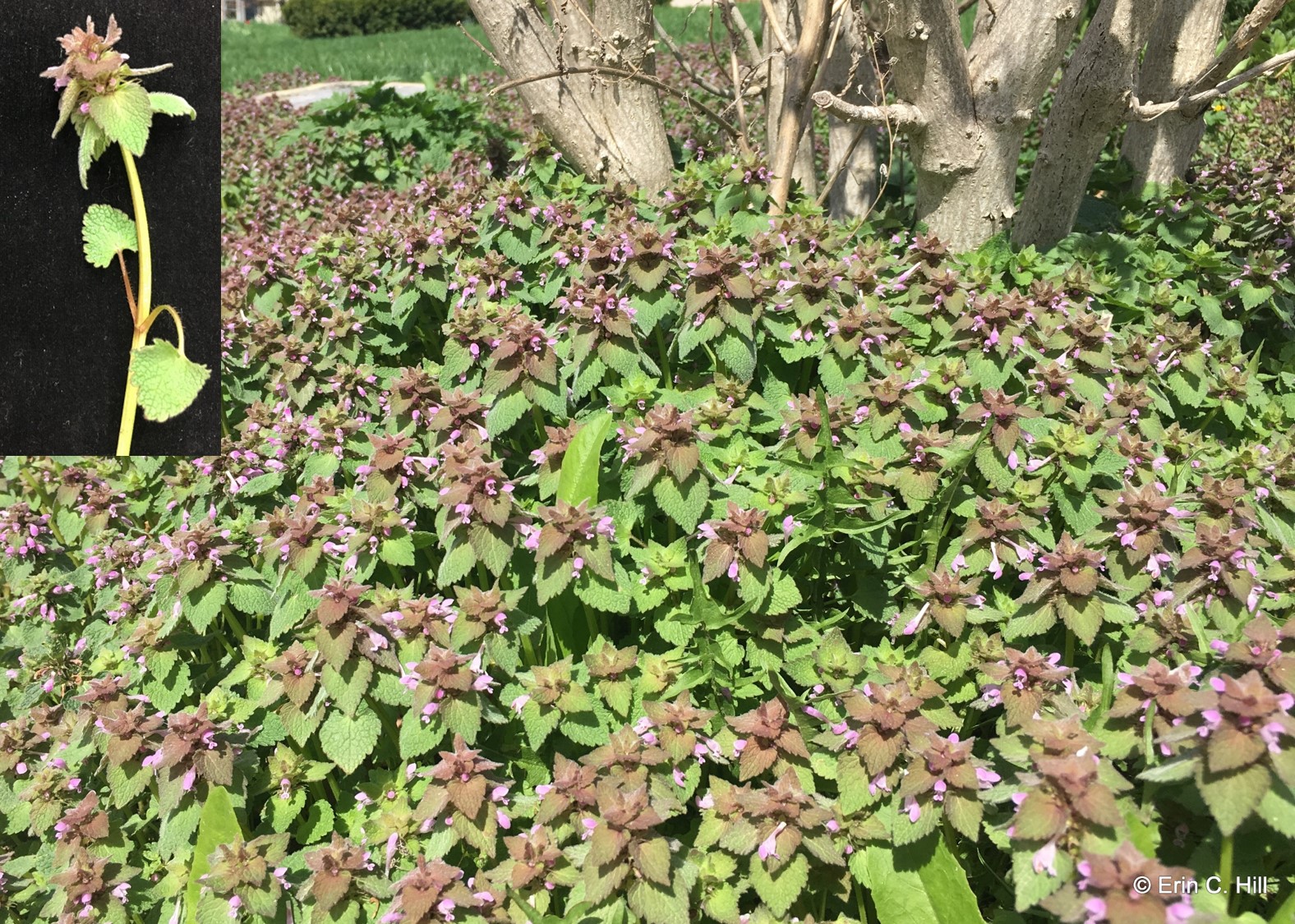

Common chickweed (Stellaria media) is a member of the Pink family that grows prostrate (along the soil surface). It has yellow-green opposite leaves with pointed tips and dainty white flowers with five deeply lobed petals.
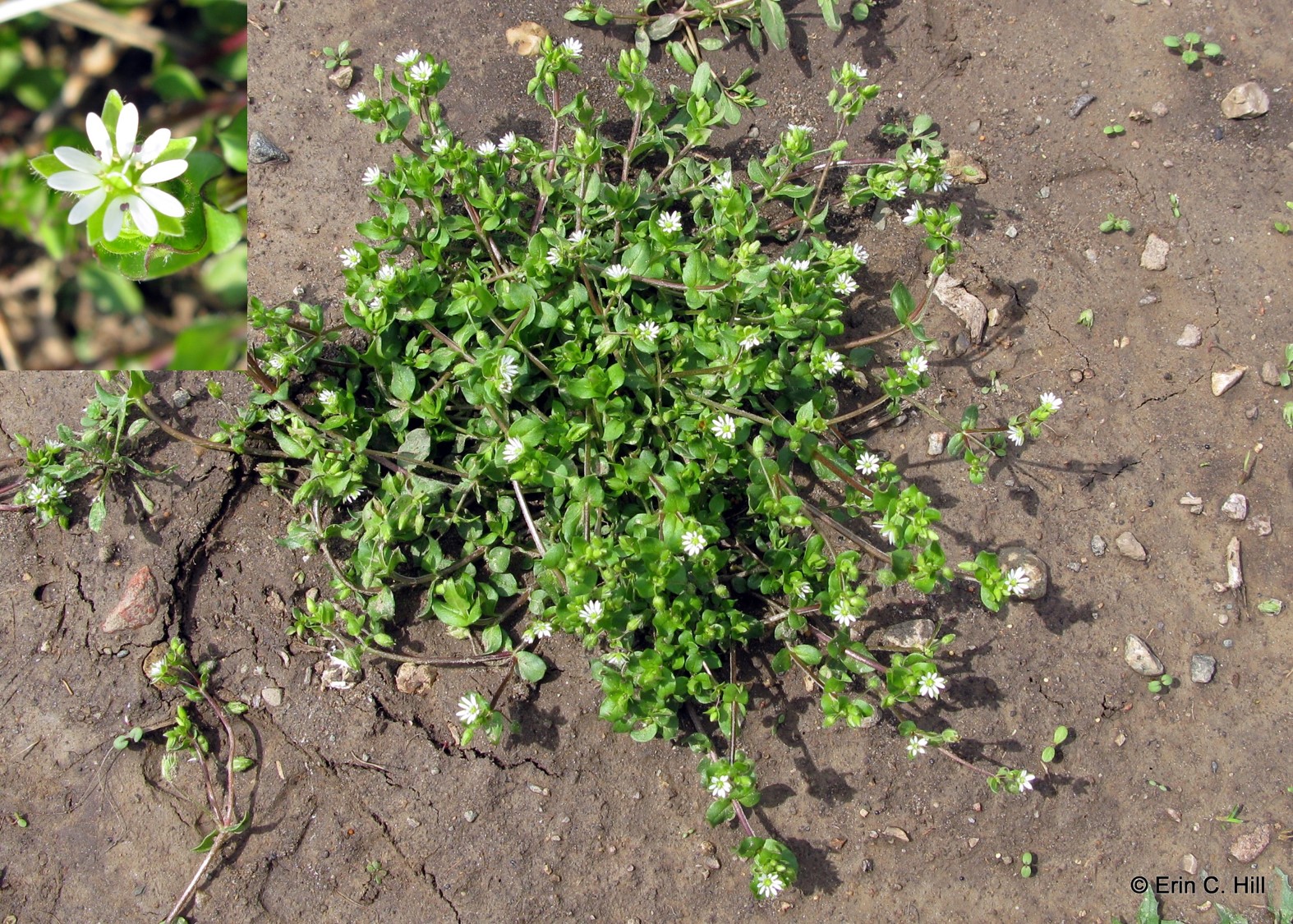
Corn speedwell (Veronica arvensis) and Persian speedwell (Veronica persica) are members of the Figwort family. Though there are several speedwells found in Michigan lawns and gardens, corn and Persian speedwells are the two that behave as winter annuals. Speedwells grow prostrate with toothed leaves, which in these two species are opposite each other on the lower portions of the stem and alternate toward the upper portion. Flowers are usually combinations of bright blue and white that though small are easy to see amongst the green foliage. Distinguishing amongst the speedwell species is often difficult, particularly when not in bloom.
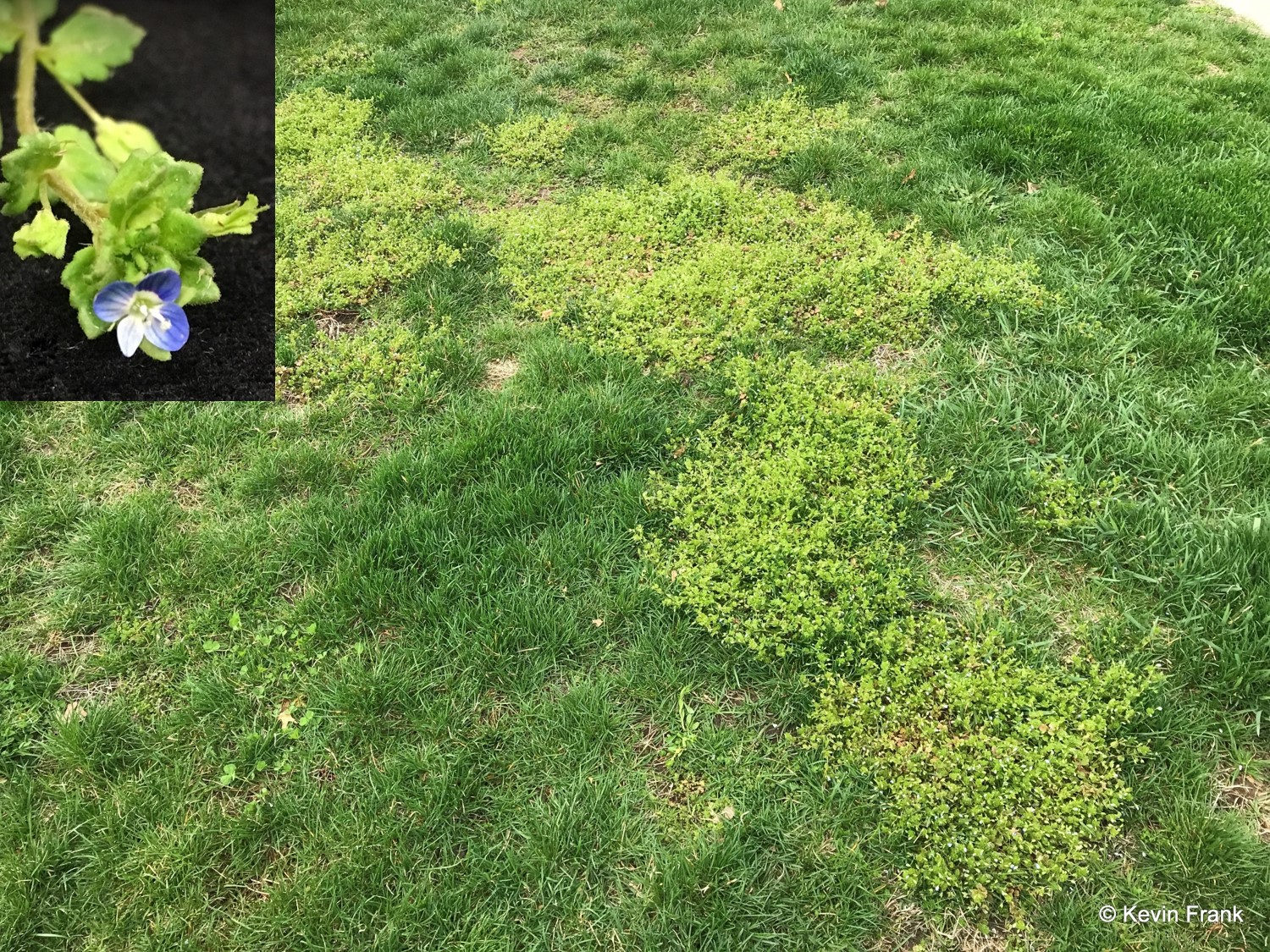
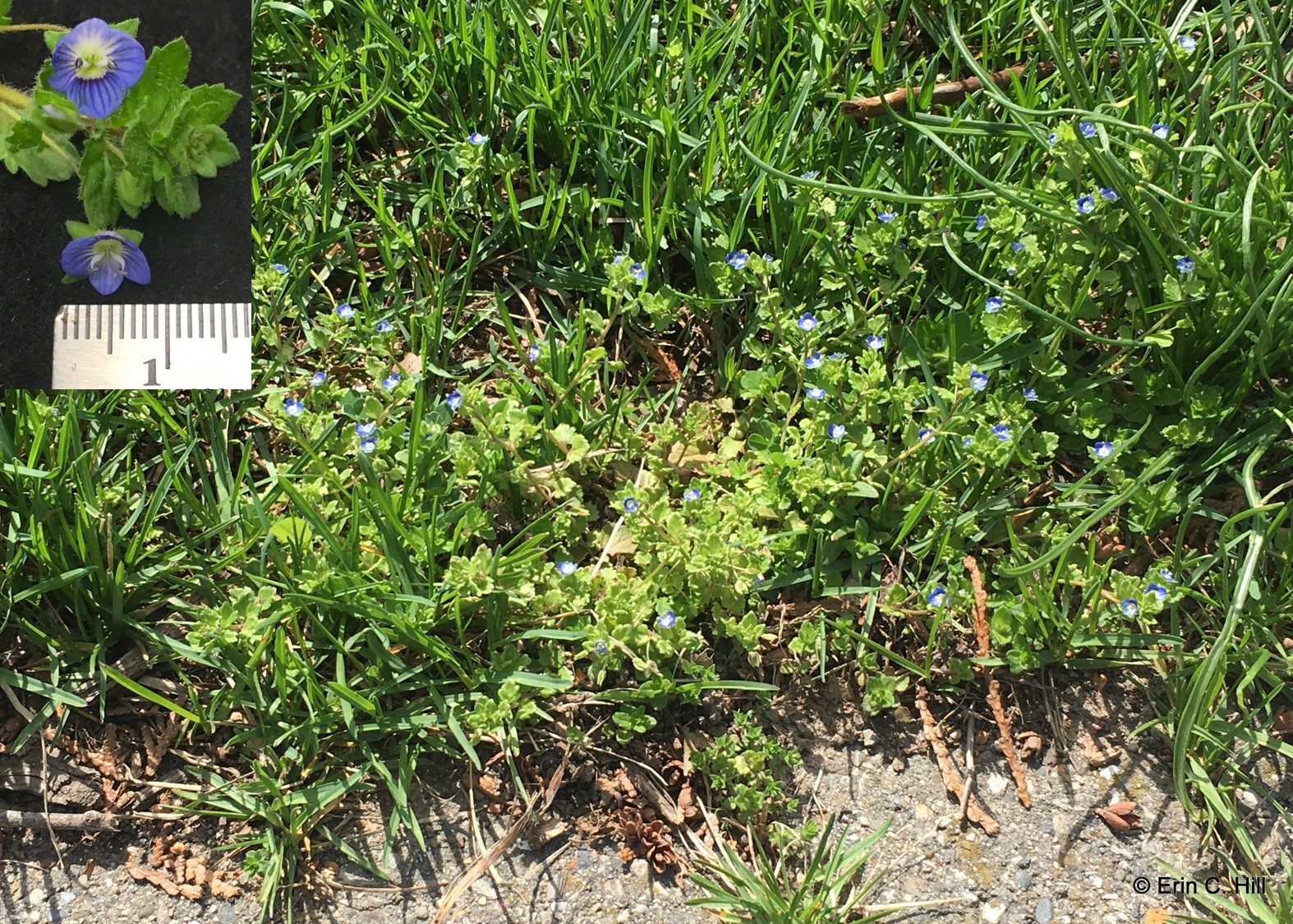
Annual bluegrass (Poa annua) is a common clump-forming grass weed. Leaves are folded and smaller than many of our regular turfgrass species, sometimes appearing as a lighter shade of green. Flowers appear as a panicle, often below mowing height.
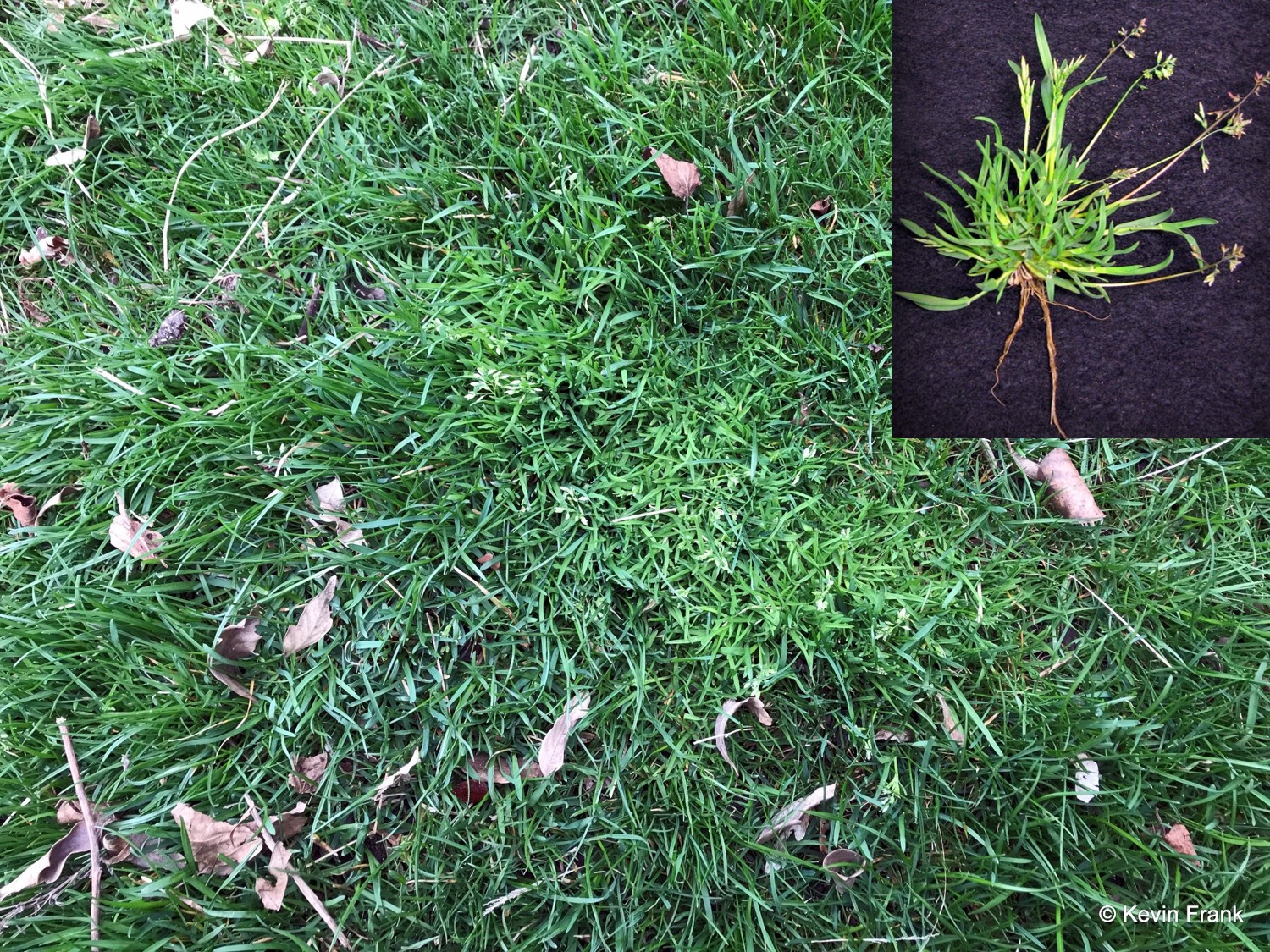
For more descriptions of weeds, visit MSU Plant & Pest Diagnostics “Weeds and Plants for Identification.”
If you have a weed that you need identified, check out the article “Plant identification? There’s an app for that—actually several!” You can also send images along with a description of the site to MSU Plant & Pest Diagnostics at pestid@msu.edu. Identification via digital images is free of charge, while identification of physical specimens submitted to the lab costs $10.
General recommendations for managing these weeds
If you desire to control these weeds in your lawn or garden, the best thing to do is remove as much as you can by hand and mow before or during flowering to prevent as much seed production as possible. Cultural practices such as fertilization and watering that promote the vigor of your desired species or mulching are also helpful in reducing all weed emergence and competition.
In the lawn, a late-summer application of a preemergence herbicide that targets crabgrass and other weeds at the point of germination should help reduce future winter annual infestations (example active ingredients include dithiopyr, pendimethalin and prodiamine). The same is true for ornamental garden beds, however there are different herbicides available (example active ingredients include trifluralin, pendimethalin, isoxaben and oxyflurofen). There are a few products labeled for use in vegetable gardens, all with the active ingredient trifluralin. In all cases, such herbicides should not be applied in areas where other species will be planted as seed. As with any pesticide application, be sure to read and follow all labeled instructions.
A final important point to consider is that later in the season the selection of herbicides dwindles in most retail centers, so if you plan to apply a preemergence herbicide for winter annual weed control, it would be advised to purchase it in the spring and save it for later in the summer.
The authors would like to thank Kevin Frank for his review of the article.



 Print
Print Email
Email




